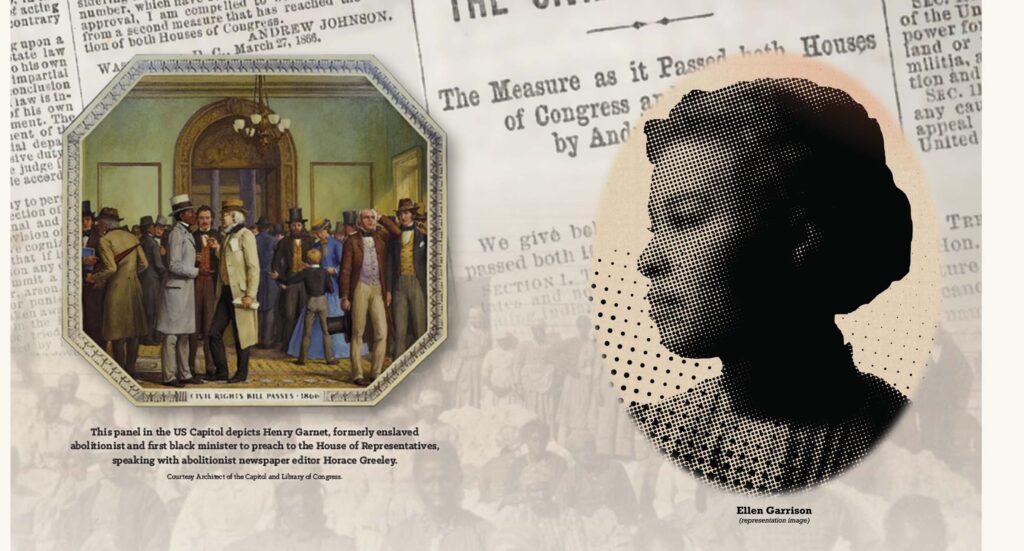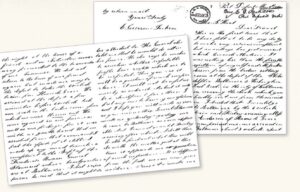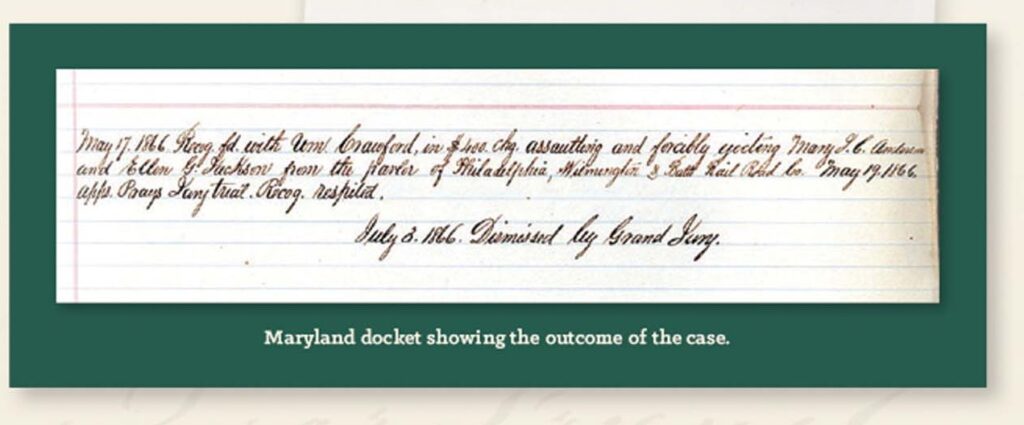

Ellen Garrison challenges segregation in a train station one month after the first Civil Rights Act
Ellen’s experiences of hostility came to a head in a Baltimore train station on May 5, 1866, when she and another black teacher were “forcibly ejected” from a ladies’ waiting room. Ellen described the situation in a letter written on May 9, 1866:
” An outrage has just occurred which demands attention. It was nothing less than the forcible ejection of myself and Miss Anderson from the Ladies sitting room at the depot. We were thrown out. We were injured in our persons as well as our feelings for it was with no gentle hand that we were assisted from that room and I feel the effects of it still. “

Courageously, Ellen returns to the segregated waiting room, finds a witness and documents her experience of harassment to support her legal case
As noted in the Baltimore Sun, local Civil Rights leaders hoped that Ellen’s case would serve as a test of the Civil Rights Act, adopted just one month earlier in April. The Civil Rights Act of
1866 was the first federal law to define and extend equal protection of the law to all citizens, Including all persons of African descent In America. Ellen felt it was her duty to test the government’s resolve to uphold the law. She explained in a May 8, 1866 letter:
“I feel as though I ought to strive to maintain my rights. As long as our friends have passed a law for our protection, we ought to contend for our rights and let our friends see that we appreciate their efforts in our behalf”
The train officer requests a jury of his peers, and the grand jury dismisses the case

Unfortunately, a Maryland grand jury dismissed Ellen’s suit against the railroad in July 1866. In what would become a recurring theme of the Reconstruction era, southern courts proved reluctant to extend civil protections to African Americans. The struggle for equal protection and civil rights would not be settled in the nineteenth century.